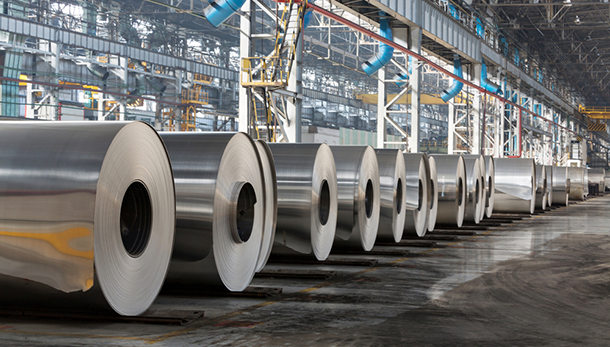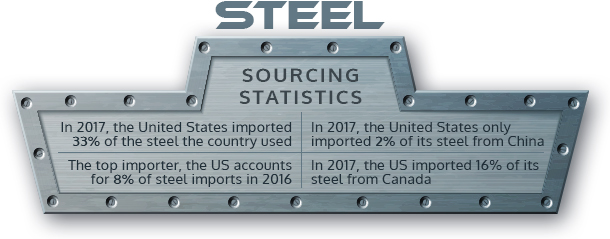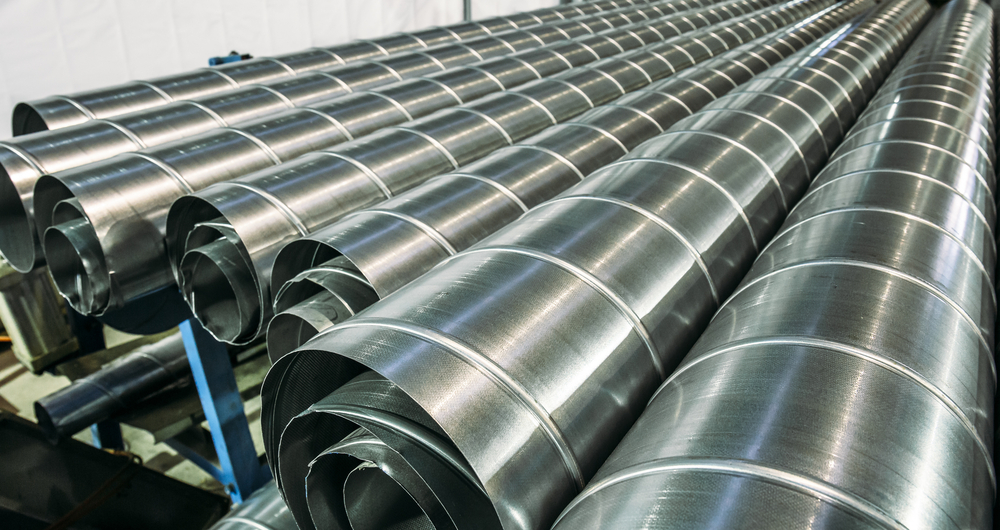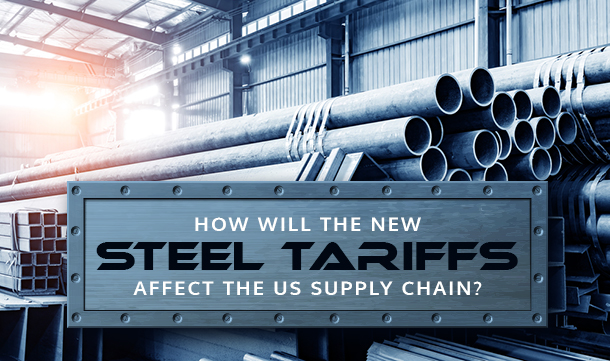In March, President Donald Trump made waves worldwide when he announced new tariffs on steel and aluminum. The new 25% tariff on steel and 10% tariff on aluminum were largely viewed as a snub against China, and the nation responded with its own new tariffs on certain agricultural products. Originally planned to be imposed on steel imported from around the world, the tariff was not applied to steel coming from Mexico, Canada, and the European Union until May. While most expert economists agree that these tariffs will protect thousands of jobs in the steel and aluminum industries, there are concerns regarding how they will impact the supply chain.
How will the new steel tariffs affect the US supply chain? Let’s examine some of the potential implications.

What Are Tariffs, Exactly?
To fully understand the impact of tariffs on the supply chain, it is important to understand exactly what they are. Simply put, a tariff is a tax levied on an imported good. There are two distinct types of tariffs. A unit or specific tariff is levied as a fixed charge for each individual unit of an imported good. A $300 per ton tariff on imported steel, for example, would be a unit tariff. Ad valorem tariffs are taxes that are levied as a proportion of the value of the goods being imported. An example of this would be a 20% tariff on imported vehicles.
Tariffs are one of the oldest instruments used in trade. Their use dates all the way back to the 18th century, and historically, their primary purpose was to increase revenue. Prior to the ratification of the 16th Amendment in 1913 which established the income tax, most of the revenue for the United States government came from tariffs.
Today, tariffs are mainly used to protect domestic industries from foreign competition while increasing revenue. In the case of the new steel tariffs, the taxes are being levied in an attempt to encourage American manufacturers to rely on domestic steel rather than importing it from other nations. This is being done in an attempt to preserve – and create – jobs in the American steel industry.
Steel Sourcing Statistics
In 2017, the United States imported just shy of 33% of the steel the country used. The US is the top importer of steel, accounting for 8% of steel imports in 2016. The United States imports steel from 85 countries, many of which are NAFTA partners, but it doesn’t get most of its steel from the world’s top steel producers. In 2017, China produced 808.4 million tons of steel, making the world’s largest producer. The United States only imported 2% of its steel from China, though, while importing 16% from Canada (the 17th largest steel producer).

Higher Manufacturing Costs
Steel is widely used throughout supply chains to produce millions of products. According to Tori Whiting, a Heritage Foundation trade economist, “These taxes will make it more expensive for U.S. manufacturers to produce anything made from steel or aluminum, forcing them to increase prices. These price differences may be small for things like soup or soda cans, but price increases for larger products like a car will be noticeable. Even a one percent increase in the price of a car is $350.”
These changes have only been in effect since the middle of March 2018, so it is still too early to fully understand their long-term effects. The manufacturing industry is already witnessing changes, though, and says that the new tariffs are affecting how much goods cost and how they are moving through the US supply chain to consumers.
The Movement of Steel Products Through the Supply Chain

While some steel is still manufactured in the United States, the modern American steel industry is relatively small. It is far more common for manufacturers to import steel from other countries than to purchase them from American manufacturers.
Tariffs, including those that were recently implemented by President Trump, raise the cost of foreign goods. This increases the demand for goods manufactured domestically. If domestic suppliers are unable to keep up with demand – as would be likely with domestic steel manufacturers – production at the beginning of the supply chain may become strained. In the case of the new steel tariffs, many manufacturers engaged in “panic buying,” or purchasing large quantities of raw materials in anticipation of higher prices or limited availability. This quickly drove up prices.
While these things would have likely happened regardless of what materials the current administration decided to tax, the impact may be felt especially hard because steel is so common across multiple supply chains. It’s used to manufacture everything from aircraft and automobiles to appliances, construction materials and thousands of other products.
When manufacturers are forced to pay more for raw materials, they have no choice but to pass those costs along to consumers. Raw materials may be first to see dramatic price increases, but finished goods quickly follow.
The Effect of the New Steel Tariff on Downstream Manufacturers

Manufacturers that need to purchase steel will be forced to either pay more for domestic steel due to high demand or pay more for imported steel due to the new tariff. Those who are unable – or unwilling – to do so will only have the option of moving their factories out of the country. This, of course, is in direct opposition of Trump’s goal of moving factories back into the US.
The new tariffs are likely to cause major disruptions. Switching to sourcing from a domestic steel company takes a considerable amount of time and effort, and certain types of manufacturers – like automobile manufacturers – must go through time-intensive processes to qualify steel manufacturers. Switching suppliers isn’t something that happens quickly, and many major companies are expected to suffer significant losses during the transition time.
As the price of raw steel increases, downstream American manufacturers are likely to become less competitive in both the US and global markets. When the cost of materials goes up, products become more expensive to produce. Many companies will likely move their factories out of the country so they can import finished products. This happened with President George W. Bush implemented steel tariffs in 2002 – 2003.
The Impact on Jobs Outside of the Steel Industry
President Trump implemented the new steel tariff largely in an effort to preserve and create jobs within the steel industry. Unfortunately, the new taxes have a major impact on jobs outside of the steel industry. According to the Trade Partnership, the machinery and automotive industries are the most likely to suffer as the result of the new tariff. According to their research, for every single job created in the steel and aluminum industries, 18 will be lost. The tariffs will create 26,346 new jobs in the steel and aluminum industries, but between those tariffs and retaliation, 495,136 jobs in other industries are likely be lost.
Trump’s tariffs largely target one small group of workers with the goal of boosting domestic production of steel and aluminum. Unfortunately, it is likely to cause more harm than good in the world of manufacturing.
Impacts on the Logistics Industry
Changes in the supply chain can have an impact on the shipping industry as well. When manufacturers are forced to spend more money on raw materials, they may try to cut back on other parts of their budget. Commonly, they try to squeeze their shipping budgets to save money.

New tariffs can cause a ripple effect in the logistics industry, and their effects are comparable to those of the truck driver shortage. As fuel prices and the costs of trucks themselves continue to climb, transportation becomes increasingly expensive. A lack of drivers, however, is forcing trucking companies to offer higher wages to compete and to hire from a limited pool of workers. And with fewer drivers, it may take longer for deliveries to reach their final destinations.
Some companies may also face additional expenses when shipping non-steel products. Things like the steel drums commonly used to transport liquids and other materials may go up in price due to the higher cost of manufacturing steel products.
Retaliation from Other Nations
President Trump’s tariffs on steel and aluminum from Mexico, Canada and the European Union, which did not go into effect until May, quickly escalated global trade tensions and widened the already existing rift between the United States and its closest allies. Canadian leaders have promised to implement counter-tariffs of 10% and 25% on American-made farm goods, metals and other products. Mexico retaliated with tariffs on a range of US products, including flat steel, blueberries, grapes, apples and pork bellies. The European Union also plans to impose duties on American imports in retaliation.

In Conclusion
While it may seem like tariffs only impact a single part of the supply chain, their effects are felt by every company involved from creating the raw material to delivering the final product to consumers. President Trump’s new steel tariffs may preserve or create a few thousand jobs, but they are likely to eliminate hundreds of thousands more. By making it more expensive for manufacturers to obtain both imported and domestic steel, the tariffs will drive up prices throughout the US supply chain and cause numerous problems for companies in all parts of the process.











